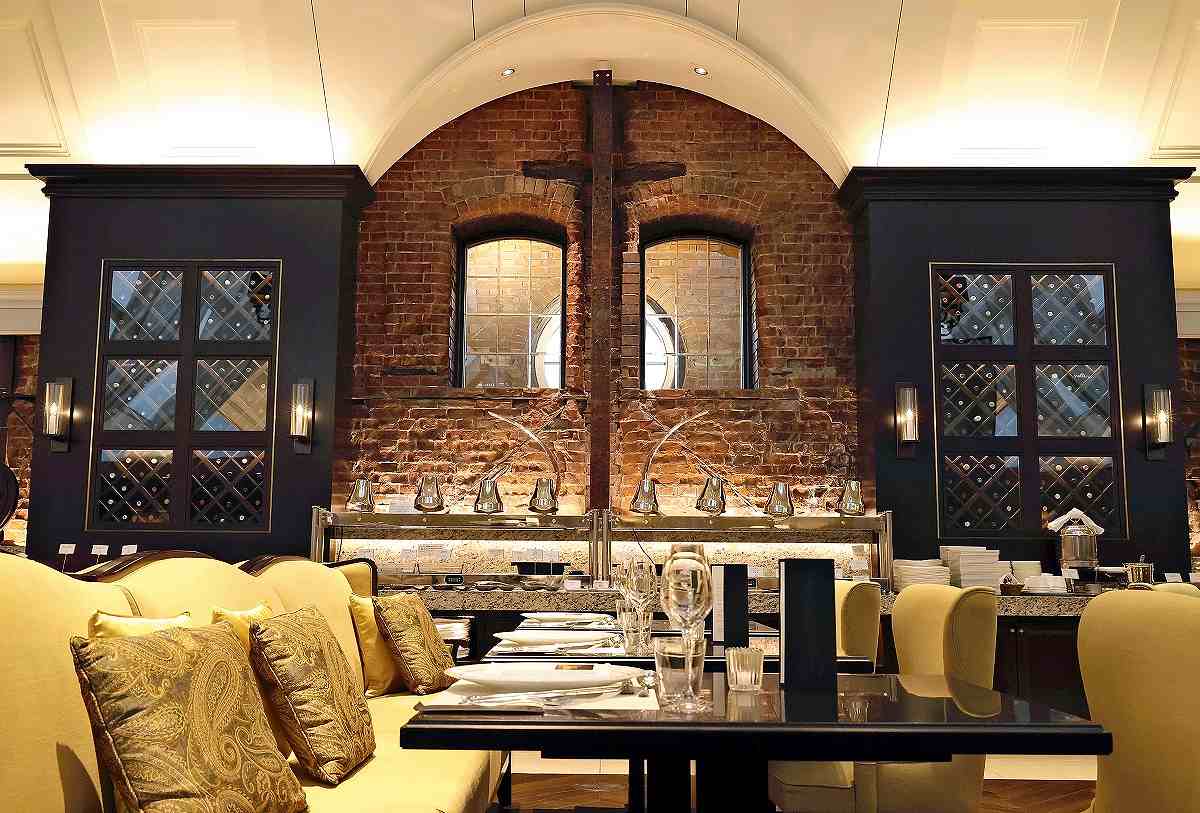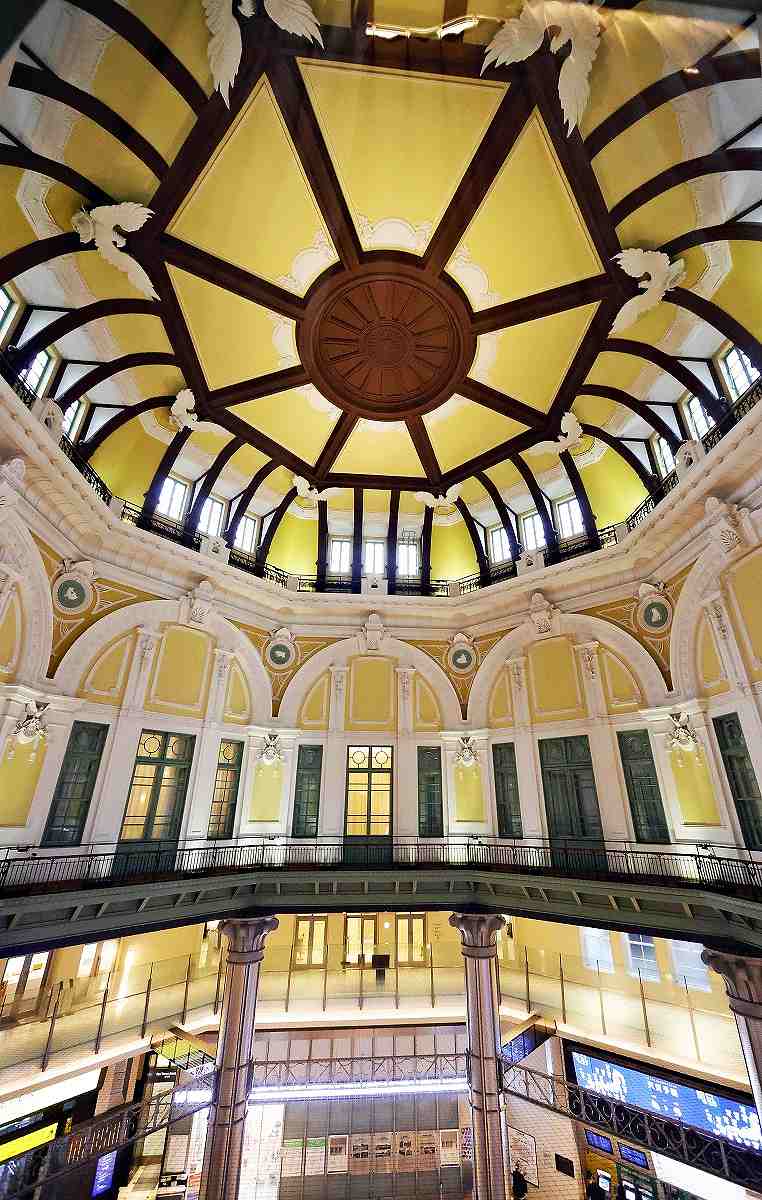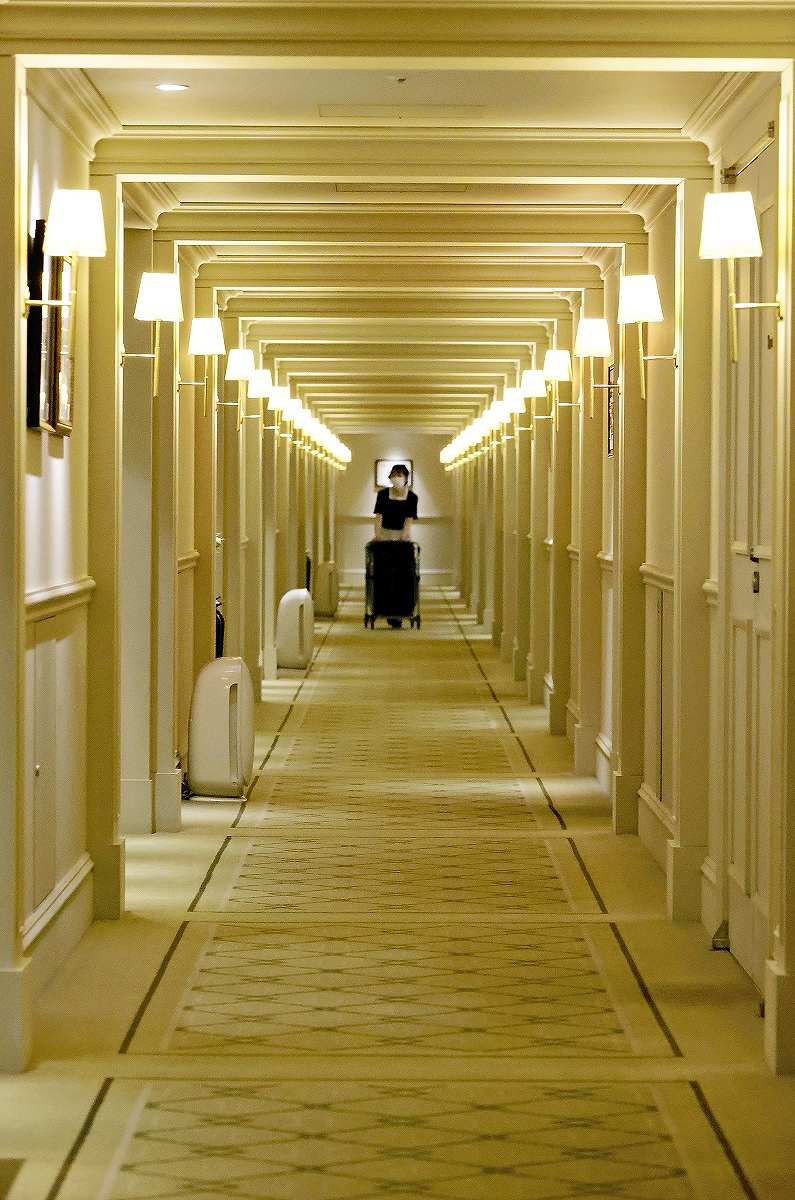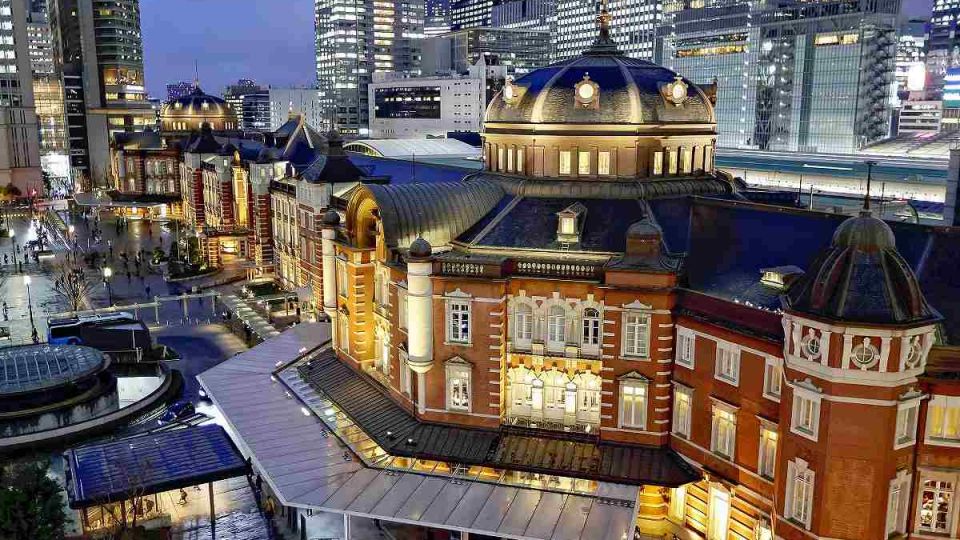April 9, 2024
TOKYO – Tokyo Station’s Marunouchi Station Building stands out in the heart of the metropolis with its magnificent appearance. The red brick building, designated as one of Japan’s Important Cultural Properties, houses the Tokyo Station Hotel. The hotel opened in 1915, the year after the station’s completion, to welcome guests from across the nation and abroad. Inside the hotel, the space is elegant and serene, as if the hustle and bustle outside were nonexistent.

Original red brick wall from the time of its construction can be seen at the Tokyo Station Hotel’s guest lounge. PHOTO: THE YOMIURI SHIMBUN
Original red brick wall from the time of its construction can be seen at the Tokyo Station Hotel’s guest lounge.
Standing in front of the glass of the third-floor corridor, the majestic dome ceiling fills one’s entire field of vision. The ornate decorations include Steller’s sea eagles larger than 2 meters and reliefs in the shape of warlord Toyotomi Hideyoshi’s kabuto helmet. The Marunouchi north and south entrance domes are symbols of the station, and hotel guests can see one of them up close. It can be seen from the windows of 28 guest rooms.

The reconstructed dome ceiling of Tokyo Station Marunouchi Station Building. PHOTO: THE YOMIURI SHIMBUN
The three-story Marunouchi Station Building designed by Kingo Tatsuno (1854-1919), the father of modern Japanese architecture, was damaged in an air raid in 1945 and lost its domes. After the war, the station was rebuilt as a two-story building with octagonal roofs where the domes had been. The station building, however, was restored to its original appearance after major renovations over five years from 2007. The station building was recreated based on photographs and people’s memories. The hotel, which had been closed during the renovation, reopened with a new look.
The hotel originally started operation in the Taisho era (1912-1926) and was loved by literary giants such as Yasunari Kawabata and Seicho Matsumoto. Some of their works were created in the hotel. In honor of their legacies, notepads in the guest rooms are designed to look like genkoyoshi manuscript paper. “Some guests nostalgically write about their feelings on the manuscript paper,” the hotel’s public relations manager said with a smile.
The station building covers a huge stretch from north to south, and the longest corridor in the hotel is 76 meters. Standing there, it seems to extend on forever. Photos and documents from before and after the war decorate the walls, including photos of the sprawling scenery in front of the station from before the first Marunouchi Building even existed and the octagonal roofs from the postwar period. A page from Seicho Matsumoto’s “Points and Lines,” serialized in the magazine “Tabi (travel),” is also on display. Walking down the long corridor, the weight of history spanning from the Taisho era to the Showa and Heisei eras seems to seep into one’s body.

The corridor that runs through the long building tempts visitors to walk all the way to the end. PHOTO: THE YOMIURI SHIMBUN
Tokyo Station Hotel
Address: 1-9-1 Marunouchi, Chiyoda Ward, Tokyo
Access: Directly connected to Marunouchi South Exit of JR Tokyo Station

